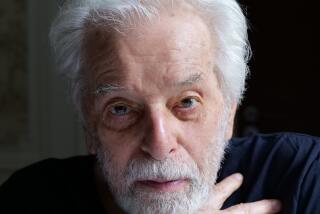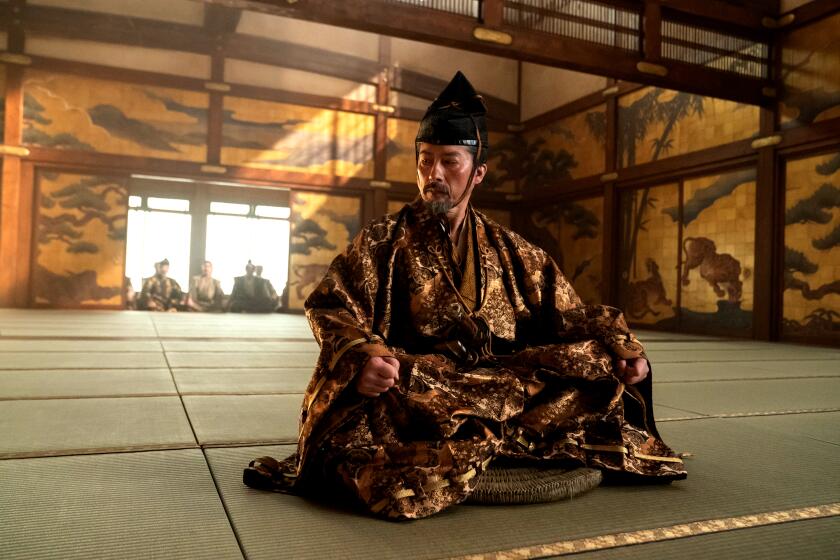Smaller Camera Is Making News
It is called “camera in a box,” or the “talking head video reporter.”
Some television executives, like Eason Jordan, a chief news executive for CNN, see it as a major breakthrough in international reporting that will make it possible for a single correspondent to transmit live pictures and reports from the “most remote hellholes of the world.” Some critics, like Philip Seib, author of “Going Live: Getting the News Right in a Real-Time, Online World,” worry that it’s “just another technological toy” with the potential to take us “farther away from good journalism.” Whatever it’s called, people in the television news business are talking about the hand-held, luggage-size package of television technology officially known as the TH-1, manufactured by the British company 7E Communications. They’ve been talking about it since April 11, when CNN used the technology to broadcast live pictures and coverage of crew members of a downed U.S. spy plane leaving China for home. It wasn’t just a television exclusive; the CNN images provided by the “talking head” technology were also reported on newspapers’ front pages the next day.
“It changes the game,” says CNN’s Jordan. “You can do it the old way and spend $500,000, with 20 to 40 cases of equipment weighing half a ton--if you can even get all of that into a country like Afghanistan or China. Or, you can spend $15,000 max on this package of equipment that you can store in an overhead rack of a small plane or on the car seat next to you, and get real-time pictures with it from anywhere on the planet.”
Frank Governale, vice president of news operations for CBS News, says there are alternatives to the TH-1 used by CNN. But he agrees with Jordan on the radical differences in price and size between this kind of TV technology and what came before--and on the relatively new ability for a correspondent to broadcast live pictures from anywhere in the world.
“Anywhere in the world as long as you have an opening to the sky, you can get pictures out,” Governale says. “But there is nothing proprietary about the technology. While it’s gotten better and better, the basic technology itself is not really new. Basically, it’s really just a teleconferencing unit. We had teleconferencing units in Baghdad [during the Persian Gulf war in 1991].”
Video conferencing packages--featuring cameras in phones that allow callers to see and be seen by those to whom they are talking--have been around for more than a decade. But what CNN did in China involved something more. CNN used two laptop-size boxes of equipment, a digital camera and much enterprise by the reporters and technicians reporting the story from a cow pasture in Hainan.
One box contained 7E’s TH-1 “Talking Head” Codec. The term “codec” stands for compression/decompression, and refers to the unit’s ability to shrink the data to bandwidth: It makes the data fit the constricted electronic pipeline, through which the audio and video signals are transmitted from the site of coverage, received by a satellite and sent to a receiving station that decodes them and then broadcasts them to viewers.
Inside the TH-1 box--a hard-shelled, waterproof case about the size of a laptop computer--is a telephone-like handset and a small control board with six knobs and a small TV screen attached. If you only have this box, you need to be in a place where there is a terrestrial ISDN phone line--one capable of transmitting large amounts of data at high speed--or an Inmarsat satellite terminal.
If you are in a cow pasture in Hainan, you also need another laptop-size box that contains a satellite telephone package.
“The TH-1 works in tandem with the satellite telephone, which is also about the size of a laptop,” Jordan says. “So you have these two laptop-size boxes. Then you have your camera. It can be a small camera or a big camera. Beyond these three pieces all you need are a few connectors, and you’re in business.”
While that might sound like the magic box does it all, Jordan says the technology would mean little without the savvy of people on the ground. In the case of the broadcast from Hainan, Chinese authorities had no intention of authorizing any broadcast from the airport.
A CNN cameraman and reporter drove to a cow pasture adjacent to the airfield and set up shop with their TH-1, satellite phone and digital camera. They had no authorization. They also had no source of power. They solved that by powering the TH-1 off the car battery--going through the cigarette lighter, according to Jordan.
Broadcasting from the cow pasture rather than driving to a satellite facility to transmit pictures as their competitors did gave CNN 25 minutes of exclusive live coverage--a lifetime in the super-live-and-late-breaking world of 24-hour real-time news channels. The 7E company sold more than 50 TH-1 units within a day of the Hainan broadcast, according to Jordan. Motion Media, 7E’s partner in developing the package, reports that sales have tripled since the spy plane incident.
David Zurawik is television critic for the Baltimore Sun, a Tribune Company.
More to Read
The biggest entertainment stories
Get our big stories about Hollywood, film, television, music, arts, culture and more right in your inbox as soon as they publish.
You may occasionally receive promotional content from the Los Angeles Times.






